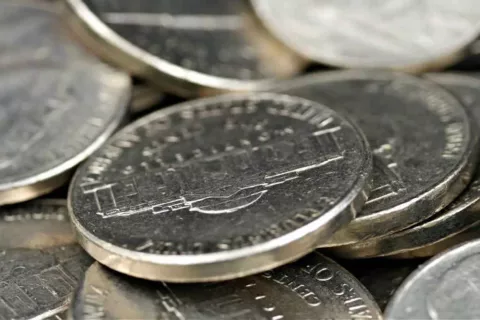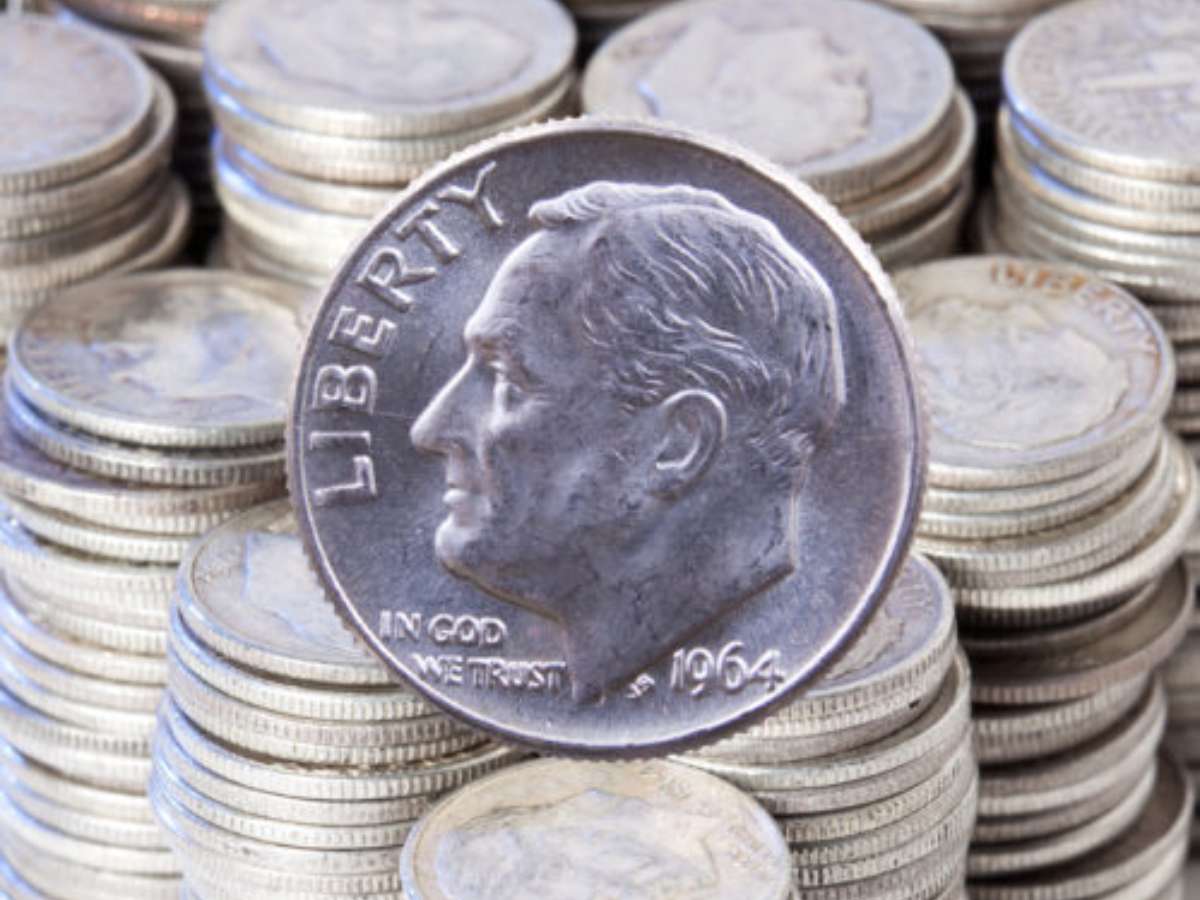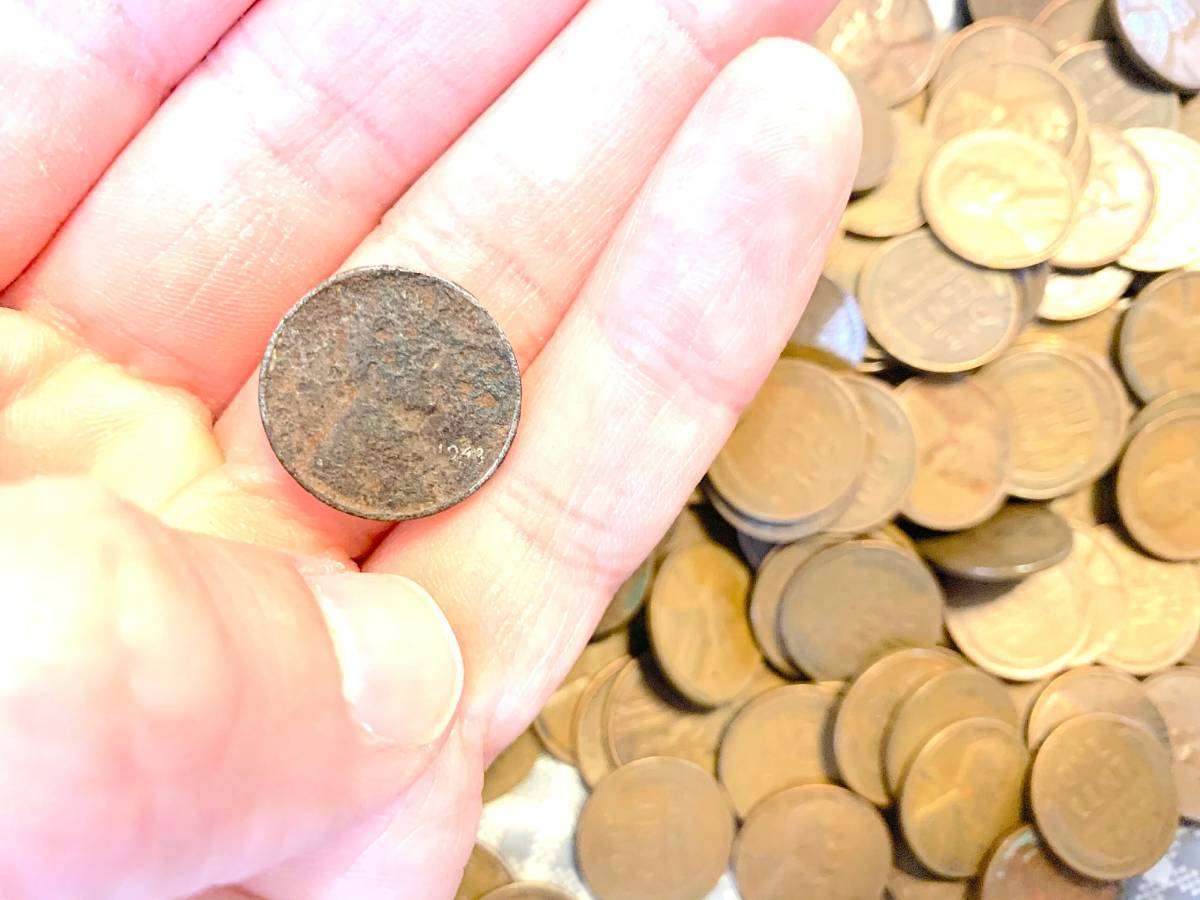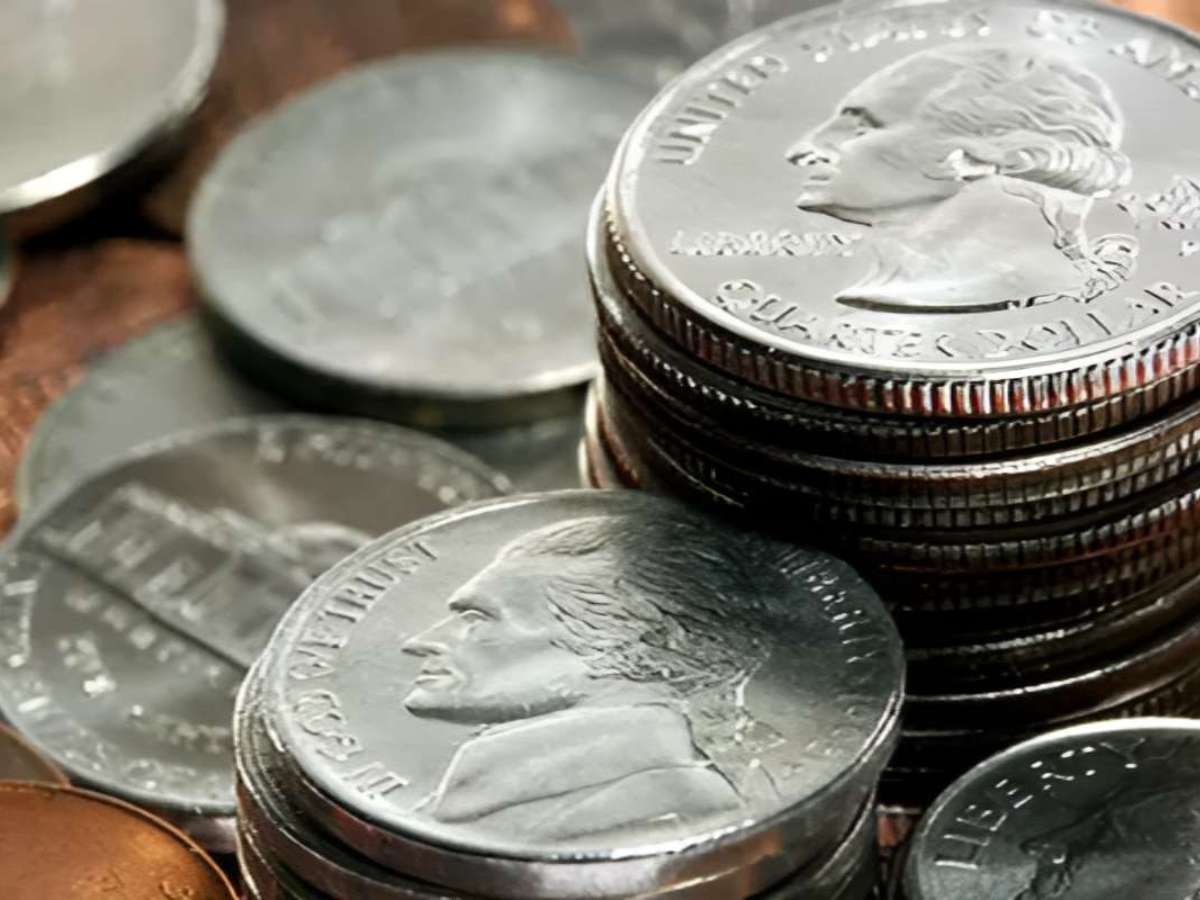
Are you looking for 1944 nickel values?
While all 1944 nickels are made from silver and worth more than face value, some are worth thousands of dollars.
If you’ve found a 1944 Jefferson nickel, you’re in luck. These old nickels are made from silver and worth more than face value.
And some 1944 silver Jefferson nickels are worth hundreds, even thousands of dollars!
So, which of these old nickels are worth looking for?
In this article, you’re going to find out why the 1944 nickel is so valuable –and, more importantly, which ones could land you the big bucks!
How Much Is A 1944 Nickel Worth?
Any 1944 Jefferson nickels you find are worth keeping — since all of them contain silver.
Determining exactly how much a specific 1944 silver nickel is worth depends on these 4 things:
- Where it was minted and/or the mintmark
- The coin’s grade and overall condition
- If Full Steps details are present on your 1944 nickel
- The presence of any errors or varieties
Let’s look at each type of 1944 Jefferson nickel and what they’re worth:
1944-P Nickel Value
The most common of the 1944 silver nickels was struck at the Philadelphia Mint and carries a large “P” mintmark on the reverse (tail’s side) over the dome of Monticello. A total of 119,150,000 nickels were made in Philly.
Worn 1944 nickels are worth about $1.50 to $2.50, depending on prevailing silver prices and also the individual condition of the coin itself. Typical uncirculated 1944 Jefferson nickels are worth closer to $7 to $10.
The record price for a 1944-P nickel is $9,400 for a specimen graded by Professional Coin Grading Service (PCGS) as MS67+ Full Steps.
1944-D Nickel Value
The 1944-D silver nickel from the Denver Mint carries a large “D” mintmark over Monticello and has a mintage of 32,309,000. While it’s not the scarcest of the 1944 nickels its much less common than its Philadelphia counterpart, especially with Full Steps details.
Circulated 1944-D nickels are worth around $1.50 to $2.50, while uncirculated specimens are worth about $7 to $10 and up.
The highest price ever paid for a 1944-D Jefferson nickel is $22,325, which was the amount commanded by a stunning PCGS specimen graded MS68 Full Steps.
1944-S Nickel Value
The rarest of the three types of 1944 Jefferson nickels is the 1944-S. It was struck at the San Francisco Mint and bears its large “S” mintmark on the reverse of the coin above Monticello. It’s the rarest of the three types of nickels made that year, with a mintage of just 21,640,000 specimens struck.
A typical worn 1944-S nickel is worth $1.50 to $2.50, while uncirculated specimens range from about $7 to $10 apiece.
The all-time record price for a 1944-S nickel is $14,100 for a PCGS-graded MS68 specimen with Full Steps designation.
Rare 1944 Nickel Errors & Varieties To Look For
Some of the most valuable old Jefferson nickels are those that contain errors and varieties. Of course, it’s easy for some collectors to confuse legitimate mint errors with common (and worthless) post-mint damage.
Here’s a rundown on some of the most valuable 1944 nickel error and variety coins:
1944 Doubled Die Nickels
When a coin’s die is created on a hubbing device, sometimes the design is inadvertently impressed twice at two slightly different angles. When this happens, every coin produced by the doubled die will also exhibit doubling.
Doubled dies are among the rarest and most desirable of all error and variety coins, particularly when the doubling on the coin is plainly evident with the naked eye. While there are no major doubled dies known among 1944 nickels, you can find minor doubled dies by scoping the obverse (head’s side) and reverse of each coin with 5x magnification. Doubled dies are worth anywhere from $25 to $100 or more.
1944 Off-Center Nickels
Off-center errors are dazzling oddities on which part of the design is missing either because the coin was misaligned with the dies on the presses or the dies themselves were misaligned. Generally speaking, the more of the design that is missing (up to about 50%), the more the error is worth. However, the most valuable off-center coins are those on which half the design is missing and where the full date and mintmark (if applicable) are completely visible.
A typical off-center error coin with 5% to 10% of the design missing is worth from $5 to $10, though an error with 50% of the design absent and a full, readable date can fetch $50 to $100 or more. Older off-center error coins are often worth many multiples of these values.
1944 Repunched Mintmark Nickels
Back in the 1940s, U.S. Mint officials punched mintmarks onto dies individually by hand. This left a lot of room for error — mintmarks being slightly in the wrong spot, double punched, sideways, and so on. All of these repunched mintmark varieties are highly collectible and worth a small chunk of change, too.
Typical repunched mintmark varieties showing the mintmark doubled are worth $3 to $5. However, those that exhibit tripling, quadrupling, or a correctly positioned mintmark over another that’s sideways or upside down can be worth much more, from $50 to $100 and up from there.
So, Why Were 1944 Silver Nickels Made Anyway?
A lot of collectors want to know why the Jefferson five-cent coin was ever made from silver at all.
The story traces back to World War II, the international conflict that spanned from 1939 through 1945 and compelled American involvement beginning in 1941. The United States government needed to ration a variety of materials for the war effort — including nickel, which served a vital role in making artillery.
The Jefferson nickel has traditionally been made from an alloy of 75% copper and 25% nickel. So, to redirect nickel from the five-cent coins to a more critical military role, the United States congress passed a law in October 1942 permitting the coin to be made from an alloy of 56% copper, 35% silver, and 9% manganese.
The first silver war nickels were struck in late 1942 and are distinguished from “regular” 1942 nickels by the presence of a large “P,” “D,” or “S” mintmark over the dome of Monticello. The Jefferson war nickels were made until 1945, with the regular alloy returning in 1946, which is when the mintmark returned to its then-normal location just to the right of Monticello.
War nickels are highly collectible and are much more valuable than most other worn Jefferson nickels of that period.
Fortunately for collectors, it’s still possible to find silver Jefferson war nickels in circulation, particularly through searching bank rolls of nickels!
IMPORTANT: Do You Know The Grade Of Your 1944 Nickel?
To determine the true value of your 1944 Jefferson nickel, you first need to know what condition (or grade) your coin is in.
Grab a coin magnifier and a copy of the U.S. Coin Grading Standards book. Then, watch this video to see how to grade coins yourself at home:




